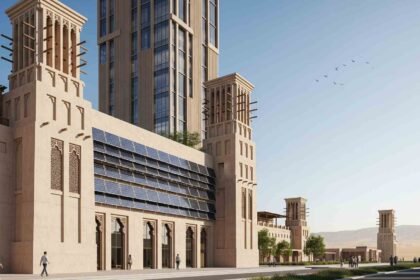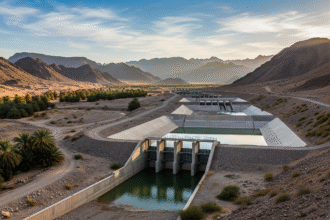In a high‑stakes strategic overhaul, Saudi Arabia’s NEOM giga‑city project is eyeing significant workforce reductions and the relocation of more than 1,000 staff members to Riyadh. The moves are occurring as the kingdom launches a wider strategic review aimed at controlling costs and tightening governance across its most ambitious development venture.
NEOM, launched in 2017 by Crown Prince Mohammed bin Salman as a linchpin of Vision 2030, includes flagship ventures such as The Line, a mirrored linear city once promised to stretch 170 km along the Red Sea, and other futuristic designs like Oxagon (a floating industrial complex) and Trojena (a mountain ski resort).
Staff reductions and relocations
According to people familiar with internal planning, NEOM is considering laying off approximately 20 per cent of its full‑time workforce and relocating over 1,000 employees from the isolated coastal site to the capital.
Those moved to Riyadh are expected to lose site‑based benefits, such as provided housing and 24‑hour catering, effectively resulting in a reduction in take‑home pay. The relocation reverses a previous policy under former NEOM CEO Nadhmi Al‑Nasr, who had insisted staff live at the remote construction site. At least one source cautioned that no final decisions have been made and that plans remain subject to change.
Strategic recalibration underway
The workforce shift is part of a broader reassessment led by NEOM’s new acting CEO, Aiman al‑Mudaifer, who took over last November following the abrupt departure of Nadhmi Al‑Nasr, a widely reported shake‑up in the project’s leadership.
Under al‑Mudaifer, NEOM and its owner, the Public Investment Fund (PIF), have initiated a sweeping review of project scope, financing, and timelines. The aim is to sharpen focus on deliverable outcomes amid tightened financial conditions.
Some developments on the Red Sea coast have reportedly been delayed, and external consultants have been retained to evaluate feasibility, expected economic benefits, and capital requirements.
Slower build-out and cost escalation
Sources indicate construction on substantial portions of The Line has been paused. Workforce headcount on the site has dropped by roughly 35 per cent since April 2025, signalling a ramp‑down in pace.
Originally tentatively pegged at $500 billion, The Line’s estimated cost has since soared. Internal documents informally cited suggest a new estimate as high as $1.5 trillion, with some reports, though not independently confirmed, indicating a ballooned figure reaching $8.8 trillion by final completion.
Further data from Gulf News and other outlets indicates that NEOM’s initial target of 1.5 million residents in The Line by 2030 has been revised down to just 300,000, and that only 2.4 km of construction may be complete by then.
Driving factors: financial pressure and oversight
The changes come as the PIF seeks tighter control over its investments. Concentrating NEOM staff in Riyadh is understood to be part of a push for stronger governance and oversight from the sovereign fund. That shift also follows an internal audit and operational critique of Al‑Nasr’s tenure, during which inconsistent budgeting and over‑optimistic forecasting came under fire.
Budget tightening is occurring amid a broader fiscal recalibration across Vision 2030 initiatives. Falling oil prices and rising construction costs have prompted state‑led entities to delay, slow or phase many projects in favour of more measured spending.
Project future: scaling back, not abandoning
Despite these major adjustments, Saudi officials continue to affirm that NEOM, including The Line, remains central to its long‑term transformation goals. Although the pace has slowed and the scope moderated, work continues on Oxagon’s green hydrogen facility and the Trojena resort for the Asian Winter Games 2029.
Officials have reiterated that NEOM will remain a long‑term endeavour, one that may unfold over decades rather than years. The project leadership has stressed that the decisions reflect a new phase of governance targeting operational discipline, strategic focus, and financial sustainability.
With mass relocations and staffing cuts looming, NEOM enters a new chapter defined by tighter budgets and deeper scrutiny. Investors, planners and stakeholders are watching closely to see how this strategic reset affects momentum and credibility in the kingdom’s flagship giga‑project. As cost estimates creep higher and schedules stretch further out, Saudi Arabia will face mounting pressure to deliver tangible results or recalibrate its vision again.







